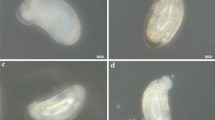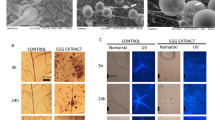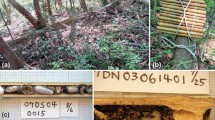Abstract
FOR several years some red spider ovicides have appeared on the market. Most of these compounds are active chiefly on the summer eggs, and far less active on the winter eggs of the fruit tree red spider Metatetranychus ulmi Koch. One of these compounds, 2,4,5,4′-tetrachlorodiphenyl sulphone (tetradifon), shows extremely high ovicidal and larvicidal activity on Tetranychids, but is not active on the winter eggs of Metatetranychus ulmi. In the course of investigation of the past five years a large number of diphenyl compounds has been tested on tetranychids1. Some of them have been examined for activity on the winter eggs and compared with some other compounds. The latter experiments are reported here.
This is a preview of subscription content, access via your institution
Access options
Subscribe to this journal
Receive 51 print issues and online access
$199.00 per year
only $3.90 per issue
Buy this article
- Purchase on SpringerLink
- Instant access to full article PDF
Prices may be subject to local taxes which are calculated during checkout
Similar content being viewed by others
References
Huisman, H. O., Uhlenbroek, J. H., and Meltzer, J., Rec. Trav. Chim. Pays-Bas, 77, 103 (1958).
Meltzer, J., and Dietvorst, F. C., Proc. Fourth Int. Cong. Crop Prot., Hamburg, 1957, 669 (1959).
Author information
Authors and Affiliations
Rights and permissions
About this article
Cite this article
MELTZER, J. Evaluation of the Activity of Some Diphenyl Compounds on Winter Eggs of the Fruit Tree Red Spider. Nature 192, 474–475 (1961). https://doi.org/10.1038/192474a0
Issue date:
DOI: https://doi.org/10.1038/192474a0



